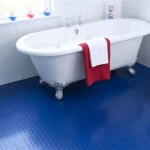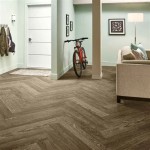Can You Use Thin Brick On The Floor?
Thin brick, a lightweight and versatile material, has gained popularity in both residential and commercial design. Its aesthetic appeal, mimicking the look of traditional brick without the weight and cost, makes it an attractive option for various applications. While thin brick is commonly used for walls and backsplashes, a frequently asked question is whether it can also be utilized as a flooring material.
The short answer is yes, thin brick can be used on the floor. However, there are several factors to consider to ensure a successful and durable installation. Understanding these considerations, including the specific type of thin brick, the substrate, the installation process, and the intended use of the floor, is crucial for achieving optimal results. Failing to account for these elements can lead to premature wear, cracking, and other issues that compromise the integrity and appearance of the flooring.
Key Point 1: Thin Brick Type and Durability
Not all thin brick is created equal. Different manufacturing processes and materials result in varying levels of durability and suitability for flooring applications. Extruded thin brick, for instance, is typically more dense and durable than molded thin brick. This density translates to greater resistance to abrasion, impact, and moisture penetration, making it a preferable choice for high-traffic areas and installations prone to spills or moisture exposure.
The American Society for Testing and Materials (ASTM) sets standards for brick products, including thin brick. Look for thin brick that meets ASTM C1088, the standard specification for thin veneer brick units made from clay or shale. This certification ensures that the thin brick meets minimum requirements for compressive strength, water absorption, and other key performance characteristics. The specific class designation within ASTM C1088, such as Type TBS (for severe weathering) or Type FBS (for moderate weathering), indicates the brick's suitability for different environmental conditions.
Before selecting thin brick for flooring, it's essential to review the manufacturer's specifications and technical data sheets. These documents provide detailed information about the product's properties, including its abrasion resistance (measured by the Porcelain Enamel Institute, or PEI, rating), its breaking strength, and its water absorption rate. A higher PEI rating indicates greater resistance to surface wear, making the thin brick more suitable for floors. Similarly, a lower water absorption rate minimizes the risk of damage from moisture, particularly in bathrooms, kitchens, and outdoor installations.
Consider the intended use of the floor when choosing the type of thin brick. For example, a floor in a residential entry hallway will likely experience less traffic and wear than a floor in a commercial restaurant kitchen. Selecting a durable, high-quality thin brick that is specifically designed for flooring applications is paramount to ensuring the longevity and performance of the installation.
Key Point 2: Substrate Preparation and Installation
The substrate, or the surface onto which the thin brick is installed, plays a critical role in the overall success of the flooring project. A properly prepared substrate provides a stable, level, and structurally sound foundation for the thin brick, preventing movement and minimizing the risk of cracking or delamination. Inadequate substrate preparation is a common cause of flooring failures, regardless of the material used.
For concrete substrates, ensure that the surface is clean, dry, and free of dust, debris, oil, grease, and any other contaminants that could interfere with the adhesion of the mortar. Cracks and imperfections should be repaired with a suitable patching compound. Leveling compounds can be used to create a smooth, even surface. It is also crucial to verify that the concrete slab is properly cured and has sufficient compressive strength to support the weight of the thin brick and the expected traffic load.
For wood substrates, such as plywood or OSB, it is essential to ensure that the subfloor is structurally sound and adequately supported. Any loose or damaged boards should be replaced. Consider adding a layer of cement backer board over the wood subfloor to provide a more stable and moisture-resistant surface for the thin brick. Cement backer board is specifically designed for use under tile and other flooring materials, and it helps to prevent movement and cracking caused by wood shrinkage and expansion due to changes in humidity.
The installation process itself is also critical to the success of thin brick flooring. Use a high-quality, polymer-modified thin-set mortar specifically designed for thin brick or tile installations. Follow the mortar manufacturer's instructions carefully regarding mixing, application, and curing times. Apply the mortar evenly to the substrate using a notched trowel, ensuring that the notches are the correct size and depth for the specific type of thin brick being used. Press the thin brick firmly into the mortar with a slight twisting motion to ensure good contact and adhesion.
Maintaining consistent grout joints is essential for both aesthetic appeal and structural integrity. Use tile spacers to ensure uniform spacing between the thin brick units. After the mortar has cured, apply a high-quality grout that is suitable for the specific application. Consider using a sanded grout for wider grout joints, as it provides greater strength and resistance to cracking. Seal the grout after it has cured to protect it from stains and moisture penetration. Regular cleaning and maintenance will help to preserve the appearance and longevity of the thin brick flooring.
Key Point 3: Sealing and Maintenance
Sealing thin brick flooring is a crucial step in protecting it from stains, moisture, and general wear and tear. While some thin brick products are naturally more resistant to staining than others, applying a sealant provides an additional layer of protection and helps to maintain the appearance of the floor over time.
The type of sealant to use depends on the specific type of thin brick and the desired finish. Penetrating sealants, for example, are absorbed into the brick and grout, providing protection from within without altering the appearance of the surface. Surface sealants, on the other hand, form a protective film on the surface of the brick and grout, providing a higher level of protection against stains and moisture. However, surface sealants can sometimes alter the appearance of the floor, making it look shinier or more glossy than it naturally is. It is always advisable to test the sealant on a small, inconspicuous area before applying it to the entire floor to ensure that it provides the desired results.
Before applying any sealant, ensure that the floor is clean, dry, and free of dust and debris. Follow the sealant manufacturer's instructions carefully regarding application and drying times. Reapply the sealant periodically, as needed, to maintain its protective properties. The frequency of reapplication will depend on the type of sealant used and the amount of traffic the floor receives.
Regular maintenance is essential for preserving the appearance and longevity of thin brick flooring. Sweep or vacuum the floor regularly to remove dirt and debris that could scratch or abrade the surface. Clean spills promptly with a mild detergent and water. Avoid using harsh chemicals or abrasive cleaners, as these can damage the thin brick and grout. For stubborn stains, consider using a specialized cleaner that is specifically designed for use on brick and grout. Protect the floor from heavy furniture and equipment by using felt pads or floor protectors. With proper sealing and maintenance, thin brick flooring can provide years of beauty and durability.
The selection of appropriate materials, meticulous substrate preparation, and diligent installation techniques are all pivotal to ensuring a successful thin brick flooring project. Careful consideration of these elements will contribute significantly to the longevity, aesthetic appeal, and overall performance of the finished floor.

How To Use Thin Brick For Flooring Installation North Georgia

Thin Brick Floor Installation Royal

How To Use Thin Brick For Flooring Installation North Georgia

Thin Brick Flooring For Indoors Patios A Homeowner S Guide

How To Use Thin Brick For Flooring Installation North Georgia

Thin Brick Veneer By Portstone

Diy Reclaimed Brick Floor Laundry Room Reno

Diy Thin Brick Porch How To Lay Veneer On Concrete

9 Thin Brick Flooring Ideas Lubelska

Brick Flooring Tiles Thin Walls Floor Tile
Related Posts








